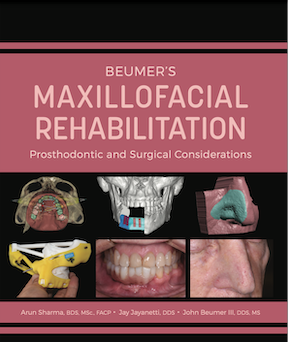Appropriate contours enhance stability and control of the lower denture, provide support for the lips and cheeks, enhances esthetics particularly in patients with a high smile line and prevents cheek biting. A properly contoured denture also improves tolerance and comfort. This program illustrates the contours that must be developed in order to accomplish these objectives.
Complete Dentures – Final Wax Contouring — Course Transcript
- 1. 25. Final Wax Contouring John Beumer III, DDS, MS Division of Advanced Prosthodontics, Biomaterials and Hospital Dentistry UCLA School of Dentistry This program of instruction is protected by copyright ©. No portion of this program of instruction may be reproduced, recorded or transferred by any means electronic, digital, photographic, mechanical etc., or by any information storage or retrieval system, without prior permission.
- 2. Contouring the Polished Surfaces Baseplate wax Wax spatula Kingsly scraper Large cleoid discoid carver Denture brush Completed denture setup Instruments and Materials
- 3. Benefits of Properly Contoured Dentures Improved esthetics for patients with a high smile line who display significant amounts of gingiva. Provides for appropriate support and contour of the lip and cheek. Improved tolerance and comfort Facilitates stability and control. Prevents chronic biting of the lip or cheek.
- 4. Esthetics Gingival contours must be reproduced. This is particularly useful in patients with a high smile line who display significant amounts of gingiva.
- 5. Esthetics Note that the length of the cuspid and the premolar is similar to the natural state.
- 6. Why stipple? a) Esthetics – reflection of light b) Keeps food particles from traveling up to the periphery of the denture Esthetics
- 7. Esthetics and Food Impaction . The interdental papilla must be flat or slightly concave so as provide a more natural appearance and to avoid food impaction.
- 8. Lip Contours and Esthetics The thickness of the labial flange impacts lip contours. This is primarily developed during border molding the impression. Maxillary cuspid eminence Purpose: Lip support and contour. Additional contour raises the lip and the corner of the mouth. Mandibular cuspid eminence Purpose: Lip support and contour Proper contours will also minimize biting of the lips and cheeks.
- 9. Proper development of the maxillary cuspid eminences helps displace the corners of the mouth and the lip away from the biting zone. Lip Contours and Lip Biting
- 10. Proper development of gingival contours associated with the mandibular cuspid and 1 st premolar will help displace the corners of the mouth and the lower lip away from the biting zone . Lip Contours and Lip Biting
- 11. Note gingival roll and the slight concavity between gingival roll and periphery of the denture in the posterior region. This combination helps to displace the buccal mucosa away from the biting zone. Prevention of Cheek Biting
- 12. Lingual contour of the mandibular denture should be concave and there should be a slight gingival roll to prevent tongue biting and to anchor the denture teeth within the acrylic resin. Prevention of Tongue Biting
- 13. Stability and Control of the Mandibular Denture This lingual concavity also facilitates stability and control of the denture. During mastication, the tongue is pressed against this concave lingual surface while simultaneously placing the bolus onto the occlusal table. The action of the buccinator prevents the denture from being displaced laterally.
- 14. Completion of Waxup and Festooning Palate must be smooth and approximately 1-2 mm thick This will promote proper speech articulation and reduce the incidence of gagging. Why?
- 15. Final wax-up No wax on teeth surfaces Wax has been carefully smoothed Note the natural anatomic contours Butt joint between wax and teeth Completion of Waxup and Festooning
- 16. Purpose: To enhance retention & maintain the peripheral seal of the maxillary denture base by compensating for : Polymerization shrinkage Minor denture base functional movements Posterior Palatal Seal


